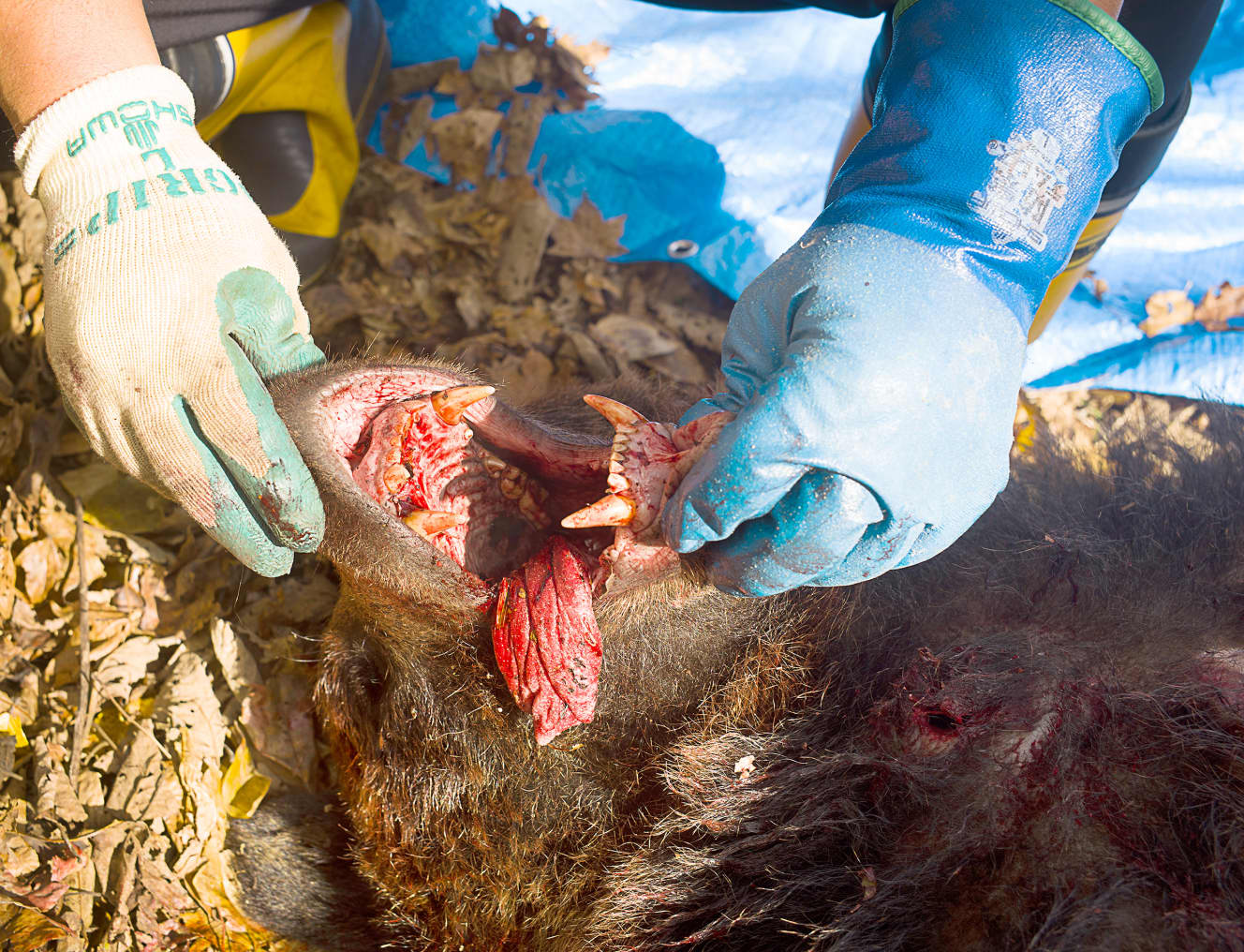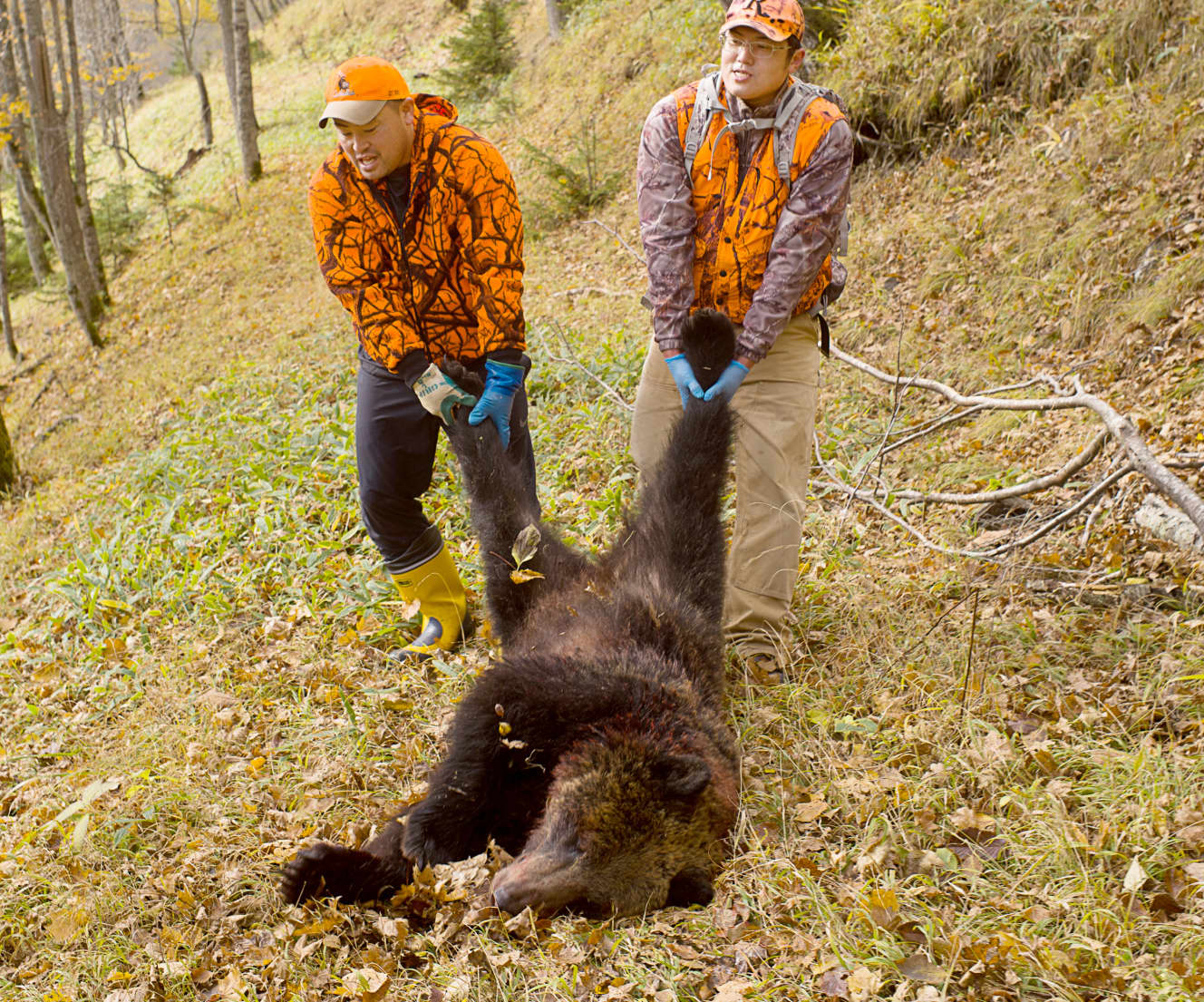The Brown Bear Hunters of Hokkaido Closely Observe the Tense Exchange of Lives
Hokkaido Tokachi: Even after OSO18 is exterminated, the fear continues

His job is to protect Hokkaido Electric Power Company workers who inspect power lines in the mountains and researchers who study the ecology of birds and animals from brown bears.
Nobuyuki Nonomura, 72, a resident of Obihiro City, Hokkaido, is a veteran hunter with 46 years of hunting experience. His area of responsibility is the Tokachi region. For the past 10 years, he has been asked by a company to play the role of a “bouncer,” so to speak, escorting clients in the mountains with a rifle in hand so that they can work safely.
The first priority is to protect the client’s life rather than to kill the brown bear, so when he encounters a brown bear, he first shouts loudly, and if the bear still approaches, he fires warning shots to scare it away. Fighting a brown bear is a last resort. It is a risky proposition.
“If they approach you, you have lost.”
Just recently, a brown bear attacked and severely injured a worker who was working on a lumbering operation to convert logged trees into lumber without an escort. Mr. Nonomura has already encountered five to six brown bears this year.
Because of the increased work in the mountains during the summer, Mr. Nonomura is asked to escort bears for about half of the month. What does he keep in mind when escorting bears?
“First of all, you have to understand the habits of bears. Even if you shoot a bear and think you have killed it, it may suddenly attack if you go near it too easily. Many hunters are caught off guard and attack a bear because they think, ‘It’s okay because the bullet hit the bear,’ You always have to fire another shot even if the bear is down. It is also important to be familiar with the mountain terrain. You also have to be strong on your feet and legs.”
Mr. Nonomura, who is hardly 72 years old, is able to climb the steep mountain with ease, keeping a sharp lookout for his surroundings.
What should he do if he is unlucky enough to encounter a bear without an escort?
“If we turn around and run away, it will attack us. If you don’t have anything to use as a weapon, you have to back away without looking away from the bear.”
This year, not only humans but also livestock have been attacked by brown bears one after another.
“Three calves were attacked by brown bears this year. We have never seen anything like this before.”
According to Teruo Kaneko, 45, who has been breeding black Wagyu cattle for three generations in Ashoro Town, one calf was found with its internal organs eaten, and two calves are missing. The mother cow had scars on her body from brown bear claws. “Cows are very cautious and have rarely been attacked by bears in the past,” Kanefuru said, his face contorted.
Many livestock producers are going out of business due to the weak yen and the rising cost of feed due to the war in Ukraine, and losing cows that they have raised with great care is a big blow.
A vast corn field for animal feed owned by Tsutomu Onuma, 52, a dairy farmer in Rikubetsu Town, was also damaged by brown bears. Brown bears climbed over the iron fence surrounding the field and entered the field. The fence was bent under the weight of the brown bear, and the field was littered with the remains of corn that had been devoured.
Mr. Onuma said, “I understand the opinion that killing bears is a pity, but for those who live here, it is a matter of life and death.”
After parting ways with Mr. Nonomura, I rode in the car driven by veteran hunter Mitsuo Kurokawa, 68, and accompanied him on a brown bear hunting trip in the mountains of Shikaoi Town. Kurokawa, who has been hunting for 40 years, was surprised at the number of brown bears that appeared this year.
“Until now, I have rarely seen bears while traveling along forest roads by car. It was impossible for me to encounter two bears in one day and shoot two of them.”

Some hunters have been struck back and killed.
One of the reasons for the increase in bears is the aging of hunters. The hunting club to which Mr. Kurokawa belongs has lost about one-third of its members. The shortage of ammunition due to the war in Ukraine, the rising price of ammunition due to the weak yen and other factors, and the rising price of gasoline for vehicles used to enter the mountains have also contributed to the shortage of hunters.
Under these circumstances, Mr. Kurokawa is also training young hunters. Instead of using cars, Mr. Kurokawa’s team does “ninja hunting,” in which they enter the mountains on foot to catch prey such as Ezo sika deer.
Since there is an increased risk of encountering brown bears when ninja hunting, Kurokawa explains the dangers of bears and teaches them the basics of hunting, such as how to shoot a rifle and how to walk in the mountains.
“In the town of Shiranuka in eastern Hokkaido, one hunter was killed and another seriously wounded after being gouged in the face by a bear that had attacked him. We tell our people that if they shoot a bear, they should wait about an hour before approaching it, or if it runs into thick bushes of bamboo grass or other vegetation, they should call their friends instead of going after it too hard.”
During the interview, we received a call from a young hunter who said he had shot a bear for the first time. The bullet hit the bear, but he had lost sight of it and did not know what to do.
He said, “If it’s been shot, it’s probably lying nearby, so take your time and look for it by following the bloodstains and footprints. Even if you are lying on the ground, they may attack you, so be careful and look for them with your gun at your hip, ready to fire at any time.”
With this advice, Kurokawa drove to the spot where the young hunter had shot the bear. At the entrance to a forest road in Kamiashoro, he met up with a pair of young hunters who had called him, and after walking together for about five minutes, they arrived at the site.
They spotted a parent and child brown bear crossing a forest road, and fired at it as it ran up the mountainside. The cub collapsed on the spot, and the parent bear, shot in the stomach, ran up the mountain.
He said, “Climb to the top of the mountain first, and then look for the bear as you go down. Never lower yourself below the bear.”
Under Mr. Kurokawa’s direction, a young hunter with a gun at his hip climbed up the slope of the mountain. Mr. Kurokawa also climbed the mountain from another direction. Even though he was wounded, the thought of a brown bear lurking somewhere made him tremble with fear.
I ran toward the voice and found a large black brown bear lying on the side of the mountain. As I approached it cautiously, I saw that it was still breathing and moving its arms and legs violently. When it sensed a human approaching, it flailed its arms and legs even more, making a last stand. Even after a bullet was fired into the bear’s head, a vital spot, the bear’s arms and legs still moved, indicating the strength of its life force.
I put the knife into the young female bear, which was about 1m50cm long and weighed about 130kg. Her body was covered in thick fat. I ripped open the belly and removed the internal organs, revealing a stomach the size of a watermelon. Inside the stomach was a sizzling mass of freshly eaten wild grapes. I shuddered to think what would have happened if I had been attacked by its sharp fangs and huge claws on its front legs.
Two days after we killed the brown bear, a group of fellow hunters got together to cook and eat the bear, a 50 cm back loin marinated in thyme, rosemary, and garlic. It was placed on a pan with a simple seasoning of rock salt and black pepper, and the surface was sautéed in butter. Then it is roasted over time in a wood-burning stove. After about 20 minutes, the meat is removed from the stove, allowed to rest, and is ready to eat. Bear meat has a fishy smell, but after the bear is killed and properly treated, such as by removing the blood, it has no odor at all and tastes just like Iberico pork.
What I witnessed during my visit was the fierce “exchange of life” between humans and brown bears. The role of hunters continues to grow in importance in order to maintain balance with the master of the mountain.







From the December 8-15, 2023 issue of “FRIDAY
Photography and text by Toru Yokota (news photographer): Toru Yokota (news photographer)
